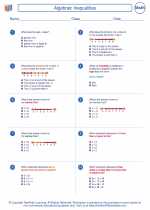Cosine Function
The cosine function, denoted as cos, is a trigonometric function that relates the angle of a right-angled triangle to the ratio of the length of the adjacent side to the hypotenuse. In simpler terms, it's a function that gives the ratio of the length of the adjacent side to the hypotenuse for a given angle in a right-angled triangle.
Key Concepts
- Definition: The cosine of an angle in a right-angled triangle is the ratio of the length of the adjacent side to the length of the hypotenuse.
- Range: The values of the cosine function range between -1 and 1.
- Graph: The graph of the cosine function is a periodic wave that oscillates between -1 and 1.
- Unit Circle: The cosine of an angle can be visualized on the unit circle, where it represents the x-coordinate of a point on the circle corresponding to the angle.
Formulas
The cosine function can be expressed in terms of the adjacent side (a), hypotenuse (h), and the angle (θ) in a right-angled triangle using the following formula:
cos(θ) = a / h
Example Problems
1. Find the cosine of an angle θ in a right-angled triangle where the length of the adjacent side is 4 and the length of the hypotenuse is 5.
cos(θ) = 4 / 5 = 0.8
Study Tips
- Practice identifying the adjacent side and hypotenuse in different right-angled triangles to apply the cosine function correctly.
- Use the mnemonic "SOHCAHTOA" to remember the definitions of sine, cosine, and tangent functions.
- Explore real-world applications of the cosine function in fields such as engineering, physics, and architecture to understand its practical significance.
◂Math Worksheets and Study Guides Seventh Grade. Algebraic Inequalities
Study Guide Algebraic Inequalities
Algebraic Inequalities  Worksheet/Answer key
Worksheet/Answer key Algebraic Inequalities
Algebraic Inequalities  Worksheet/Answer key
Worksheet/Answer key Algebraic Inequalities
Algebraic Inequalities  Worksheet/Answer key
Worksheet/Answer key Algebraic Inequalities
Algebraic Inequalities 

 Worksheet/Answer key
Worksheet/Answer key
 Worksheet/Answer key
Worksheet/Answer key
 Worksheet/Answer key
Worksheet/Answer key

The resources above cover the following skills:
Algebra (NCTM)
Represent and analyze mathematical situations and structures using algebraic symbols.
Use symbolic algebra to represent situations and to solve problems, especially those that involve linear relationships.